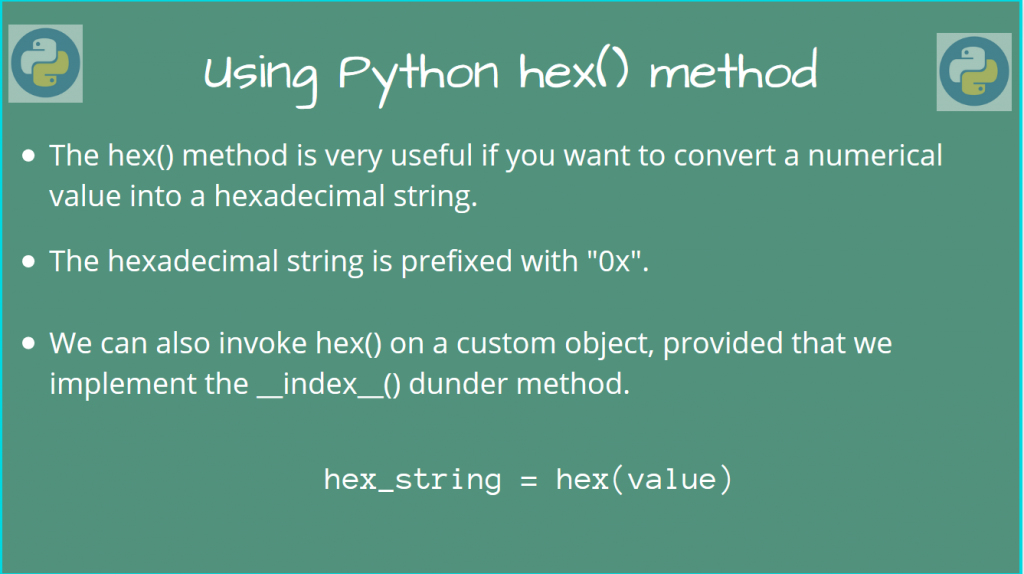In this article, we’ll cover the Python hex() function.
This function is useful if you want to convert an Integer to a hexadecimal string, prefixed with “0x”.
Let’s look at how we could use this function.
Using the Python hex() function
The Python hex() function has a very simple syntax:
hex_string = hex(val)
Here, val can be an Integer, binary, octal, or a hexadecimal number.
Let’s look at some examples quickly.
print(hex(1000)) # decimal
print(hex(0b111)) # binary
print(hex(0o77)) # octal
print(hex(0XFF)) # hexadecimal
Output
0x3e8
0x7
0x3f
0xff
Using Python hex() on a custom object
We can also use hex() on a custom object. But, if we want to use it successfully, we must define the __index__() dunder method for our class.
The hex() method will call __index__(), so we must implement it. This must return a value, which can be a decimal / binary / octal / hexadecimal number.
class MyClass:
def __init__(self, value):
self.value = value
def __index__(self):
print('__index__() dunder method called')
return self.value
my_obj = MyClass(255)
print(hex(my_obj))
Output
__index__() dunder method called
0xff
Indeed, as you can see, it returns what we expected.
First, hex() calls the __index__ method on our custom class.
Then, it converts the returned value to a hexadecimal string (255 -> “0xff”)
Conclusion
In this article, we learned about using the hex() function, to convert numerical values into a hexadecimal string.
References
- JournalDev article on Python hex()
